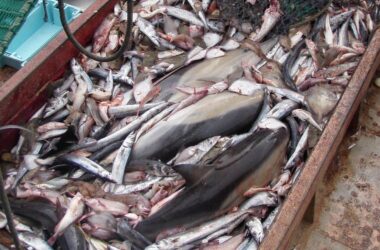Afforestation: Afforestation refers to the process of planting trees in areas where there were no trees before. This process can be done for a variety of reasons, including to combat deforestation, to create new habitats for wildlife, and to provide timber and other forest products. In this article, we will explore the definition of afforestation, provide examples of afforestation projects around the world, and discuss the pros and cons of this practice.
Definition of Afforestation
It is the process of planting trees in areas where there were no trees before. This is typically done by humans, but it can also happen naturally through the process of secondary succession. Afforestation can take place in a variety of settings, including rural areas, urban areas, and even underwater.
The primary goal is to increase the amount of forest cover in an area. This has a number of benefits, including:
- Carbon sequestration: Trees absorb carbon dioxide from the atmosphere, helping to mitigate climate change.
- Habitat creation: Forests provide habitat for a wide variety of wildlife.
- Soil conservation: Trees help to prevent soil erosion and improve soil quality.
- Water conservation: Trees help to regulate the water cycle, preventing floods and droughts.
- Timber and other forest products: Trees can be harvested for a variety of forest products, including lumber, paper, and medicinal plants.
Examples of Afforestation Projects
Afforestation projects have taken place all over the world, with varying levels of success. Here are a few examples of afforestation projects from around the globe:
- China’s Green Great Wall: China has launched an ambitious afforestation project called the Green Great Wall, which aims to plant 100 billion trees by 2050. The project is intended to combat desertification and reduce the impact of sandstorms in northern China.
- Brazil’s Atlantic Forest: Brazil’s Atlantic Forest is one of the most biodiverse ecosystems in the world, but it has been severely degraded by deforestation. In an effort to restore the forest, the Brazilian government has launched an afforestation project called the Atlantic Forest Restoration Pact, which aims to plant 15 million trees by 2020.
- India’s National Afforestation Program: India’s National Afforestation Program is a government-led initiative that aims to increase forest cover in the country by 5 million hectares by 2020. The program provides financial and technical support to individuals and communities who wish to plant trees on their land.
Pros of Afforestation
There are a number of benefits to afforestation, including:
- Climate change mitigation: Trees absorb carbon dioxide from the atmosphere, helping to reduce the amount of greenhouse gases in the air.
- Habitat creation: It can create new habitats for wildlife, which can help to support biodiversity.
- Soil conservation: Trees help to prevent soil erosion and improve soil quality, which can benefit both agriculture and natural ecosystems.
- Water conservation: Trees help to regulate the water cycle, preventing floods and droughts and helping to maintain healthy water systems.
- Economic benefits: It can provide a source of timber and other forest products, which can help to support local economies.
Cons of Afforestation
There are also some drawbacks to afforestation, including:
- Loss of other ecosystems: It can sometimes involve clearing other types of ecosystems, such as grasslands or wetlands, which can have negative impacts on biodiversity.
- Cost: It can be expensive, particularly in areas where the soil is poor or the climate is harsh.
- Time: It is a long-term process, and it can take many years for trees to grow and reach maturity.
- Invasive species: In some cases, it can lead to the introduction of invasive species, which can have negative impacts on local ecosystems and biodiversity.
- Land use conflicts: In some cases, afforestation projects can lead to conflicts with local communities over land use, particularly if the land is being used for other purposes such as agriculture or grazing.
How to Ensure Successful Afforestation
To ensure that afforestation projects are successful, there are several key factors to consider:
- Site selection: The site for afforestation should be carefully chosen based on factors such as soil type, climate, and existing vegetation. In some cases, it may be necessary to modify the site to make it suitable for tree growth, such as by adding soil amendments or improving drainage.
- Tree selection: The species of trees to be planted should be carefully chosen based on their suitability to the site, their growth rate, and their potential economic or ecological value.
- Planting techniques: The planting technique used should be appropriate for the site and the species being planted. For example, in areas with poor soil quality, it may be necessary to use techniques such as pit planting or trench planting to provide additional nutrients for the trees.
- Maintenance: Afforestation projects require ongoing maintenance to ensure the success of the trees. This may include activities such as weed control, fertilization, and pruning.
Similar Articles
- Waterspout: A Guide to Understanding this Weather Phenomenon
- Beat the Heat: Tips for Handling Really Hot Weather
Conclusion
Afforestation is an important tool for combating deforestation, supporting biodiversity, and mitigating climate change. However, it is important to carefully consider the potential pros and cons of afforestation projects, as well as to take steps to ensure their success. By choosing appropriate sites, species, and planting techniques, and by providing ongoing maintenance, we can help to ensure that afforestation projects are successful in achieving their goals of creating healthy, sustainable forests.










